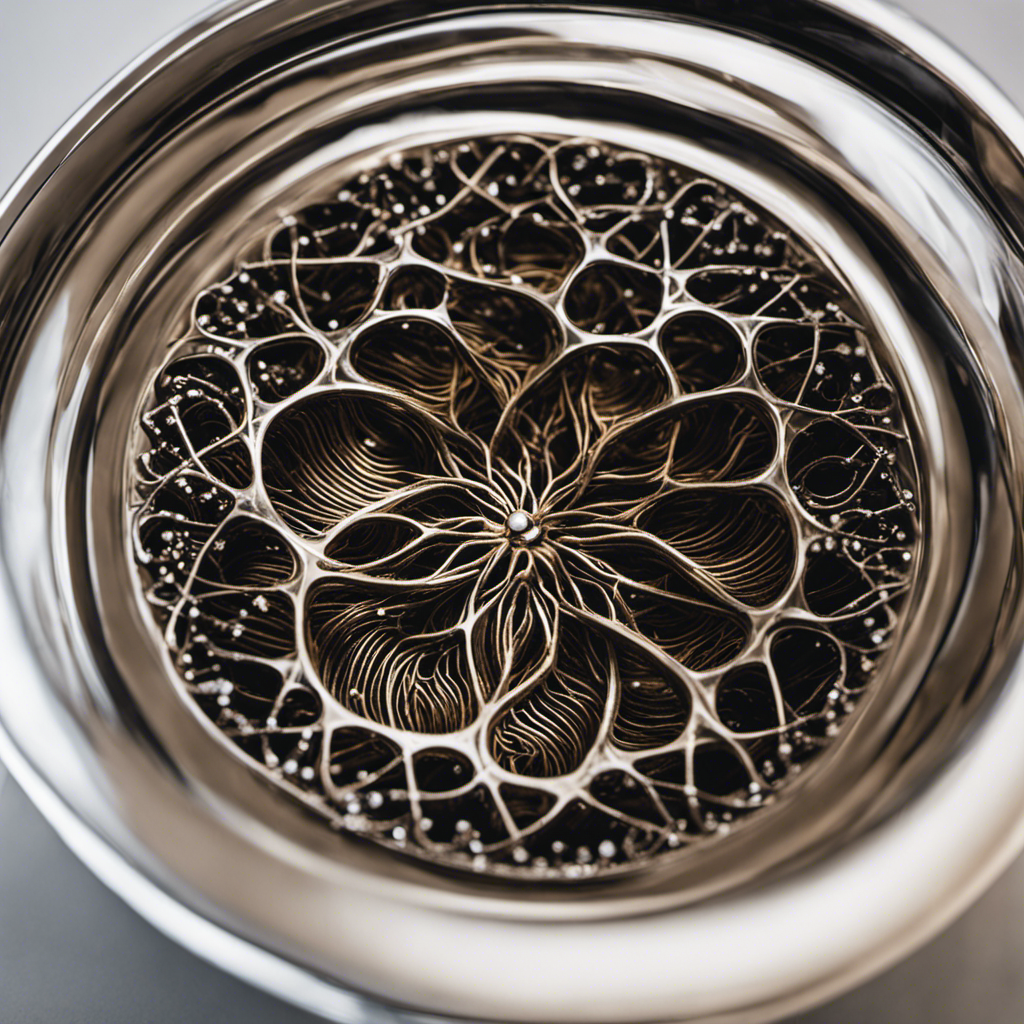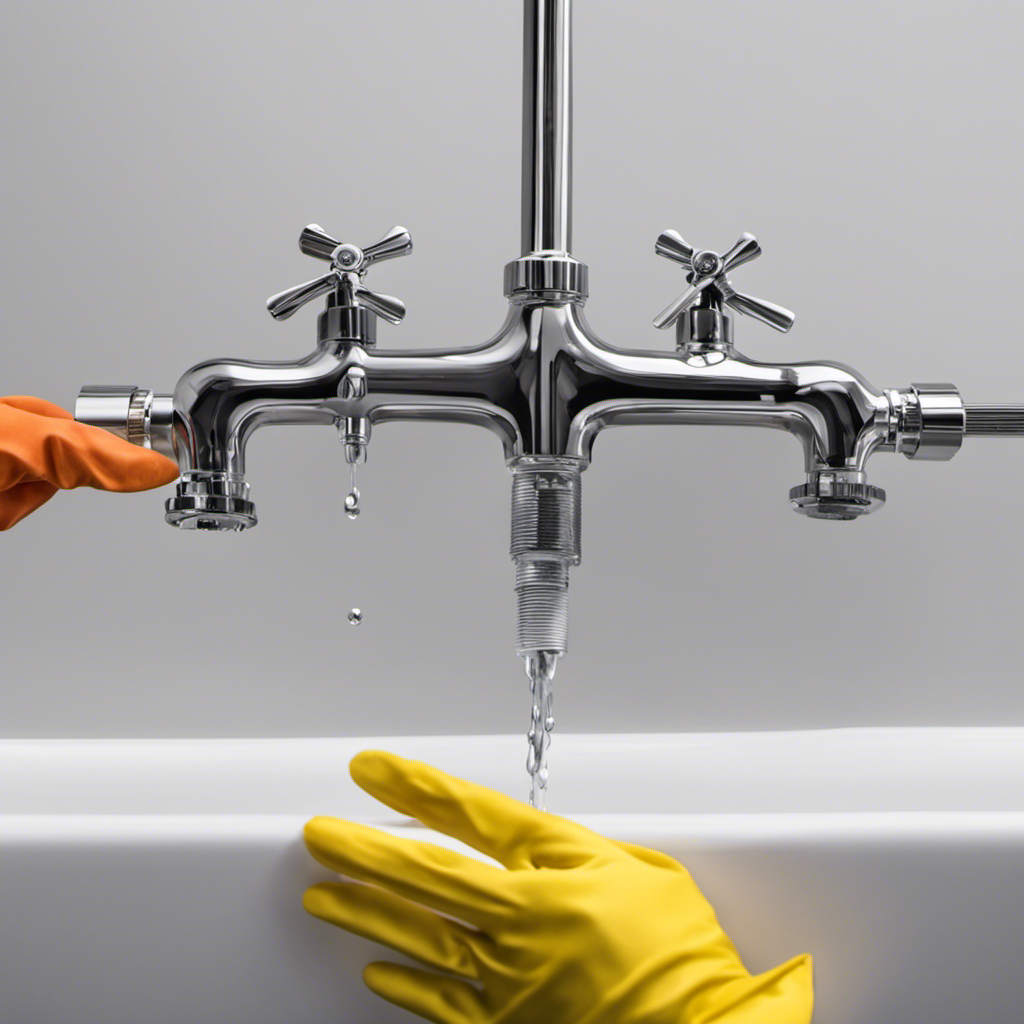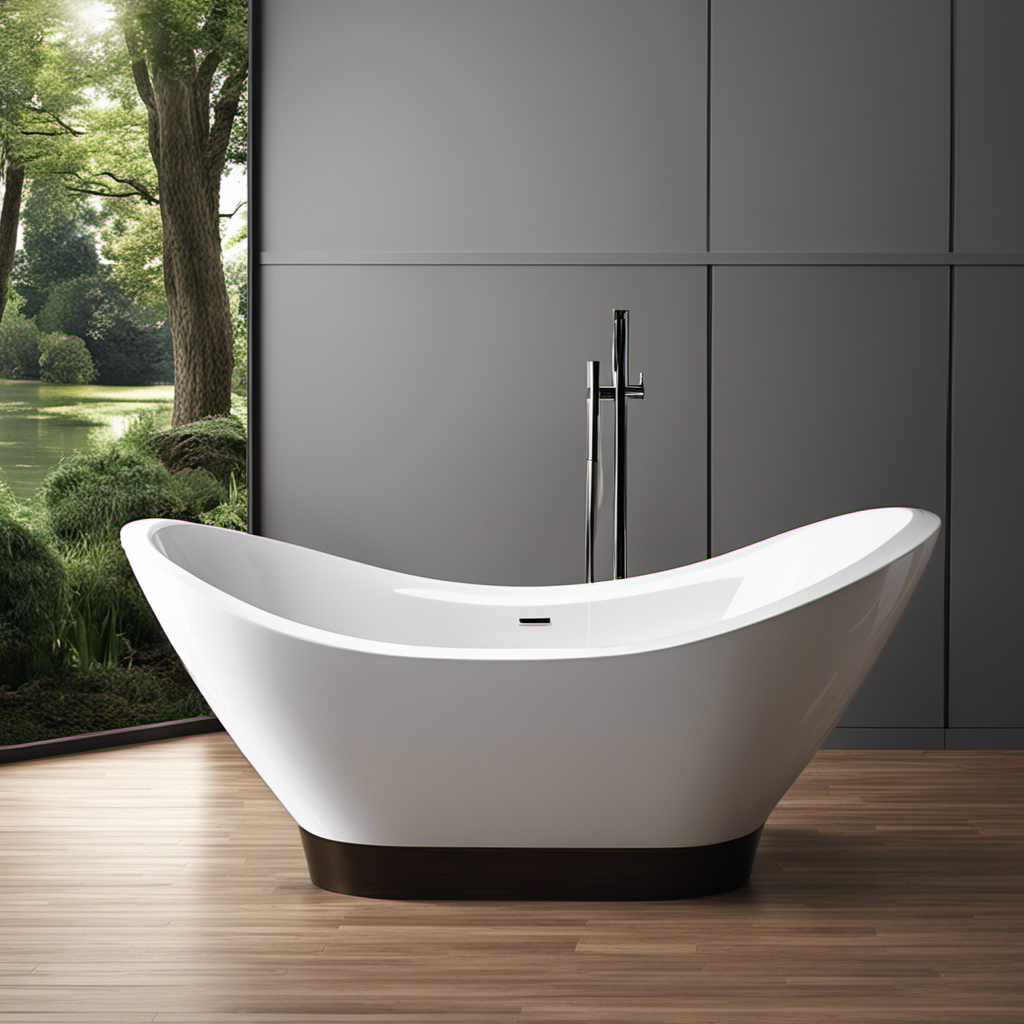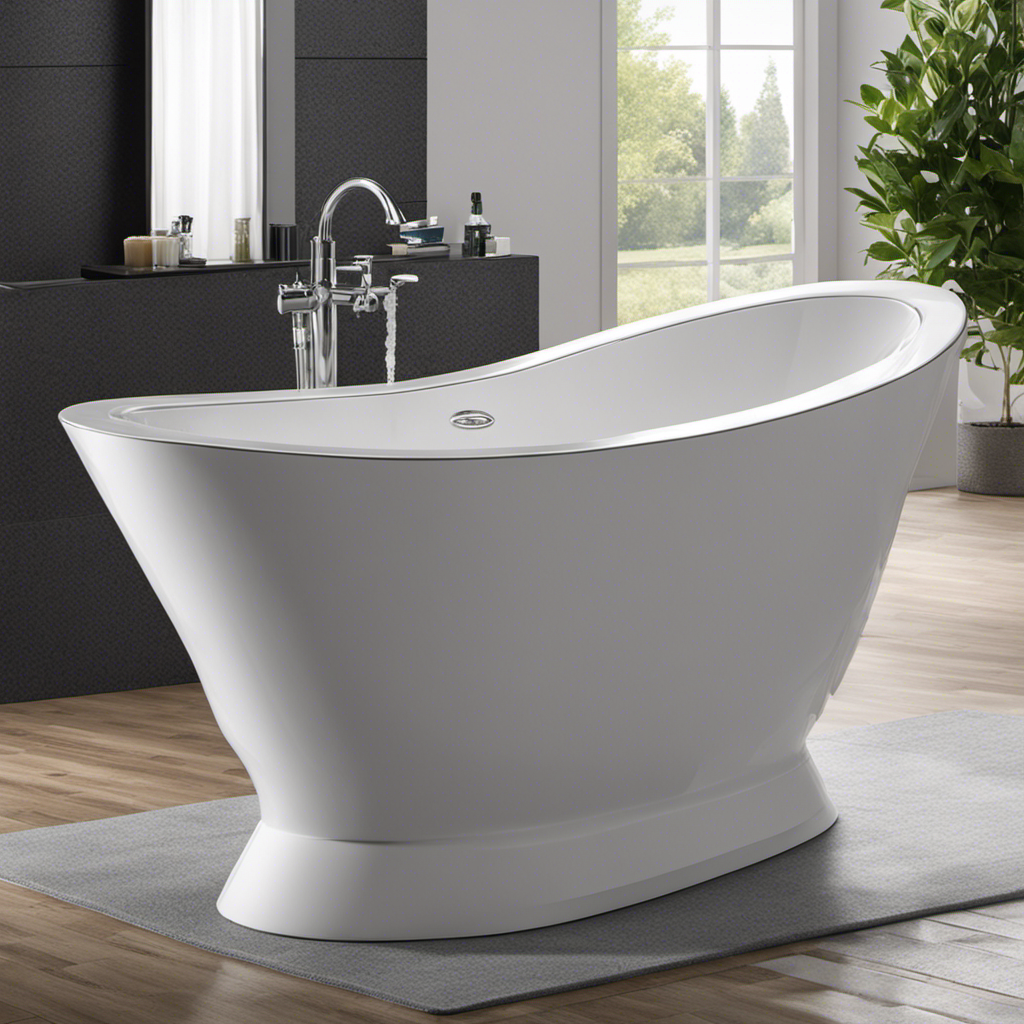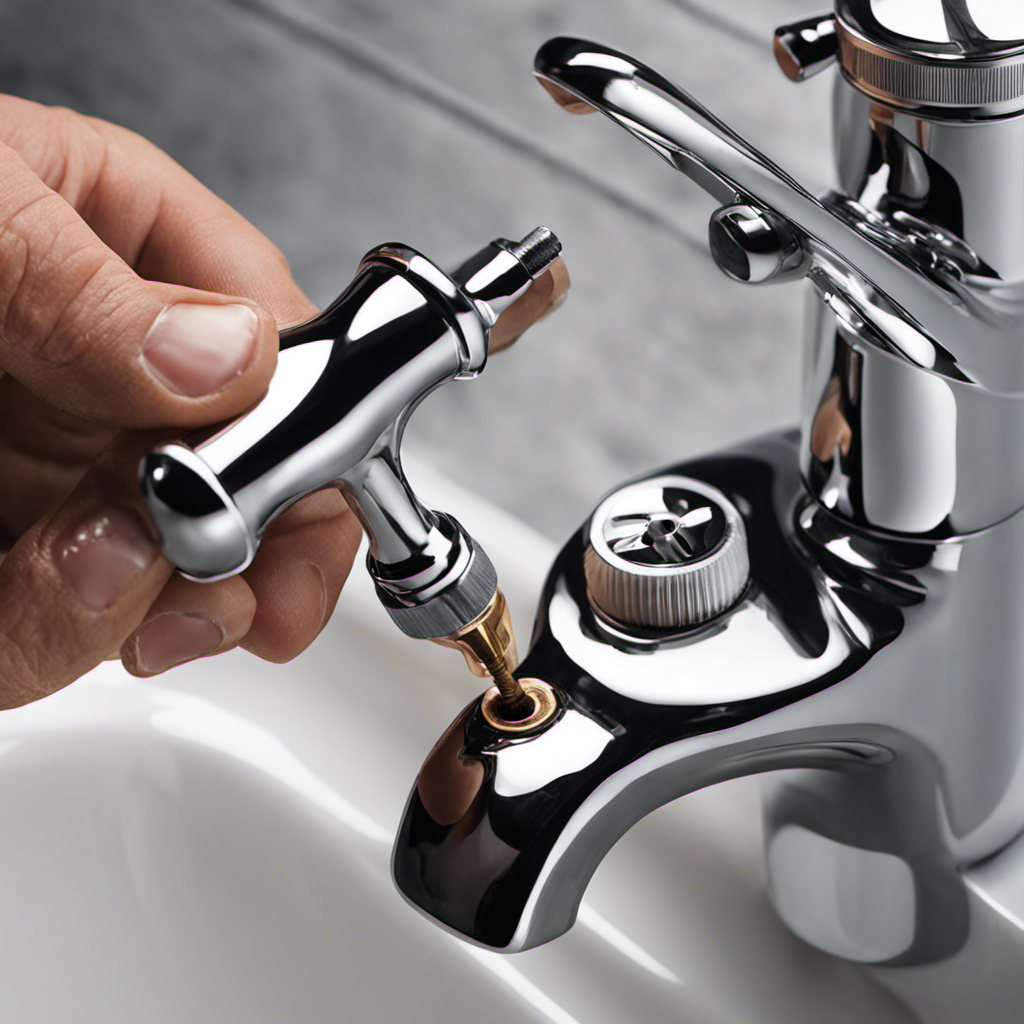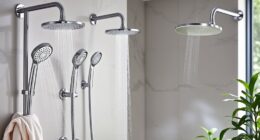Are you tired of standing ankle-deep in water every time you take a shower? Say goodbye to hair clogs in your bathtub drain with this easy step-by-step guide.
You’ll learn how to assess the extent of the clog, gather the necessary tools and materials, and remove visible hair from the drain surface.
With a drain snake or wire hanger, you’ll unclog the drain in no time.
Plus, we’ll share tips on using natural or chemical drain cleaners and preventing future hair clogs.
Get ready to enjoy a clog-free shower experience!
Key Takeaways
- Slow or no drainage indicates a significant hair clog.
- Long hair tends to cause stubborn clogs.
- Having all the necessary tools and materials is essential for effective removal.
- Using a drain cover or trap can prevent future hair clogs.
Assess the Extent of the Hair Clog
You’ll want to start by taking a look at the drain and seeing how much hair is clogging it up. Assessing the severity of the clog is essential to determine the best course of action.
If the water is draining slowly or not at all, it’s likely that a significant amount of hair is causing the blockage. To identify the causes of the hair clog, consider factors such as your hair length, frequency of showers, and any other individuals who use the bathtub regularly. Long hair, in particular, tends to accumulate and form stubborn clogs.
Once you have assessed the clog severity and identified the causes, you’ll be better prepared to gather the necessary tools and materials to remove the hair and restore proper drainage.
Now, let’s move on to the next step.
Gather Necessary Tools and Materials
To successfully remove the hair from your bathtub drain, start by gathering the necessary tools and materials. You will need a pair of gloves to protect your hands, a flashlight to help you see inside the drain, a drain auger or snake to physically remove the hair clog, and a bucket or plastic bag to catch any debris that comes out.
Additionally, you may want to have some vinegar and baking soda on hand, as these natural ingredients can help dissolve any remaining hair or gunk.
Once you have all the tools and materials, you can proceed to the next step, which involves using various drain cleaning techniques to effectively remove the hair from your bathtub drain.
Remove Visible Hair From the Drain Surface
First, grab a pair of gloves and a flashlight to examine the visible hair on the drain surface. Hair accumulation in your bathtub drain can lead to clogs and slow drains.
To tackle this issue, it’s important to remove the visible hair from the drain surface. Put on the gloves to protect your hands from any potential bacteria or debris. With the flashlight, shine it onto the drain surface to locate the hair clumps.
Take your fingers or a pair of tweezers and carefully pull out the hair. If the hair is tightly packed, you can use a toothbrush to loosen it up before removing it. Remember to clean the hair off the gloves or tweezers and dispose of it properly.
This simple step is the first in a series of DIY drain cleaning techniques to keep your bathtub drain running smoothly.
Use a Drain Snake or Wire Hanger to Unclog the Drain
Using a drain snake or wire hanger can effectively unclog a stubborn drain. Here’s how you can do it:
-
Get the right tools: Find a drain snake or straighten out a wire hanger, leaving a small hook at one end.
-
Remove the drain cover: Unscrew or lift the drain cover to access the clog.
-
Insert the tool: Slowly insert the drain snake or wire hanger into the drain until you feel resistance.
-
Break up the clog: Wiggle and push the tool back and forth to break up the clog. Be gentle to avoid damaging the pipes.
Use a Natural or Chemical Drain Cleaner
If you don’t have a drain snake or wire hanger, there are other alternatives you can try to unclog your drain. One option is to use natural drain cleaners, which are safer for both your pipes and the environment. These cleaners often contain enzymes or bacteria that break down organic matter like hair and soap scum. Another option is to use chemical drain cleaners, which are more powerful and can dissolve tough clogs. However, be cautious when using chemical cleaners, as they can be harmful if not used properly. Here is a comparison of natural and chemical drain cleaners:
| Natural Drain Cleaners | Chemical Drain Cleaners |
|---|---|
| Safer for pipes and environment | More powerful |
| Contain enzymes or bacteria | Dissolve tough clogs |
| Break down organic matter | Can be harmful if not used properly |
When using any drain cleaner, always follow the instructions carefully and take necessary safety precautions.
Prevent Future Hair Clogs by Using a Drain Cover or Trap
If you want to prevent future hair clogs in your bathtub drain, using a drain cover or trap can be highly beneficial. These simple devices are designed to catch hair and other debris, preventing them from going down the drain and causing blockages.
To install a drain cover or trap, start by removing the existing drain cover and cleaning any debris around the drain. Then, simply place the new drain cover or trap over the drain opening and secure it in place according to the manufacturer’s instructions.
Drain Cover Benefits
The drain cover’s benefits include preventing hair from clogging the bathtub drain. By using a drain cover, you can easily maintain a clean and clog-free drain. Here are four reasons why the drain cover is advantageous:
-
Hair prevention: The drain cover acts as a barrier, catching hair before it enters the drain and causing a clog. This helps to keep your drain clear and functioning properly.
-
Easy installation: Choosing the right drain cover is important. Look for one that is easy to install and fits securely over your drain. Some covers even come with adhesive strips for added stability.
-
Simple maintenance: Maintaining a drain cover is a breeze. Regularly remove and clean the cover by rinsing off any collected hair and debris. This will ensure optimal performance and prevent odors.
-
Cost-effective solution: Investing in a drain cover is a cost-effective solution to prevent hair clogs. By avoiding expensive plumbing repairs and the hassle of unclogging drains, you can save both time and money.
Trap Installation Tips
Now that you understand the benefits of using a drain cover, let’s move on to trap installation.
Installing a trap is an effective way to prevent hair clogs in your bathtub drain. The trap is a U-shaped pipe that traps debris, preventing it from entering your plumbing system. The installation process is relatively simple and can be done with a few basic tools.
Start by removing the existing drain pipe. Then, attach the trap to the drain hole using a slip joint nut. Make sure to tighten it securely to prevent any leaks. Next, connect the other end of the trap to the vertical drain pipe using another slip joint nut.
By installing a trap, you create a barrier that catches hair and other debris, preventing them from causing clogs further down the line. Common causes of hair clogs include excessive shedding, long hair, and not using a drain cover.
Installing a trap can save you from the hassle and expense of dealing with frequent clogs.
Hair Clog Prevention
Using a drain cover and installing a trap are effective ways to prevent clogs caused by hair and debris in your plumbing system. Here are some practical tips to help you keep your drains clear and flowing smoothly:
-
Use a drain cover: A drain cover with small holes will catch hair and prevent it from going down the drain, reducing the chances of clogs.
-
Clean the drain cover regularly: Hair can accumulate on the drain cover over time, so make sure to clean it regularly to maintain its effectiveness.
-
Brush your hair before showering: By brushing your hair before you shower, you can remove loose hairs that would otherwise end up in the drain.
-
Use a hair trap or strainer: Placing a hair trap or strainer over the drain will catch any hair that escapes the drain cover, further preventing clogs.
Frequently Asked Questions
How Do I Know if My Bathtub Drain Is Clogged With Hair?
If you’re wondering if your bathtub drain is clogged with hair, look out for slow drainage, water pooling, or unpleasant odors. To prevent hair clogs, use a drain cover or a hair catcher.
Can I Use a Plunger to Unclog a Bathtub Drain Clogged With Hair?
To unclog a bathtub drain clogged with hair, you can try using a plunger. However, if that doesn’t work, there are alternatives like using a drain snake or calling a professional for drain cleaning.
Are There Any Household Items That Can Be Used to Remove Hair From the Drain?
To remove hair from the drain, there are a few household remedies you can try. One option is using a DIY drain cleaner made from baking soda and vinegar. It’s a practical solution that can help unclog your bathtub drain.
What Are Some Natural Drain Cleaner Alternatives to Chemical Cleaners?
To naturally clean your drain without chemicals, try homemade drain cleaners. Baking soda and vinegar can be combined to create a fizzy solution that helps break down hair and clear the clog.
How Often Should I Clean My Bathtub Drain to Prevent Hair Clogs?
To prevent hair clogs, clean your bathtub drain regularly. Did you know that an average person loses about 50-100 strands of hair per day? Use a drain cover, vinegar and baking soda mix, or a plumber’s snake for effective prevention.
Conclusion
So there you have it, a practical guide on how to get hair out of your bathtub drain. By following these steps, you can effectively remove hair clogs and prevent future ones from occurring.
Did you know that according to a study, the average person sheds around 50-100 strands of hair every day? That’s a lot of hair that has the potential to clog your drain! So make sure to regularly clean your drain to avoid any blockages.
Remember, a little maintenance goes a long way in keeping your drain clear and your showers enjoyable.
